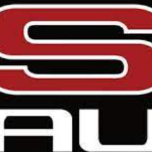Announcements
-
Latest Posts
-
Ah. OK. I take it back. I hadn't looked closely at the R33/4 arms and presumed that GKTech did as GKTech do everywhere else, which is to use sphericals there. The poly bushings are made to be 100% interchangeable, should use the standard bolt just fine. Every other bush in every other place in pretty much every other car, does.
-
By Murray_Calavera · Posted
@silviaz Ok cool, so much easier with a video. I can see why this video would be confusing for new players. It is obvious that this entire bonnet is going to be resprayed, have a look in the background around 2:05, you can see a bunch of bare metal on the left side of the bonnet. It's not an issue for the primer being laid down on the non-prepped clear on the bonnet. It will be sanded off at a later stage. This might not be obvious to new players, but working on bare metal and factory paint in this instance, the factory paint is like a mountain and the bare metal is a huge valley. The bonnet needs to be levelled flat before it receives it's final stage of colour and clear coat. During this levelling process, the primer that is landing on the clear that you are worried about will be removed. Also, this guy is out of control. Zero PPE while spraying, maybe he is a good example overall about what not to do lol. -
Ok I FINALLY found a video lol. This took way longer than it should have as I could have sworn I saw multiple videos like this. I kept finding the completely opposite (the correct way of doing this). I wouldn't be surprised if I f**ked this up somehow. I just realised where I've been getting confused and even with other things I work on. I haven't been doing things the regular way instead I'm going a roundabout way of doing things, like putting epoxy primer first then filler for example instead of putting just filler then primer on top of that, then wondering what happens if I get that primer on the clear coat that I haven't sanded yet. This was a bit of an epiphany 😂 But anyways, here this video. Time stamp, 2:56, some of the primer lands on the paint unscuffed above. You can see from the reflection it looks shiny.
-
It does, this part circled in red. I assume the OEM bolt might not work well with the poly bushing because the dimensions may be different?
-
The J arm doesn't have bushes either. Assuming that by "J arm" you mean the part of the upright that runs down from the upper arm's outer bushes to the top of the hub. That has a kingpin style bearing in it. If you meant the lower control arm, it has 1 bush, at its inner end. If you have PU in there, that is superior to Nismo rubber. If you meant the caster/tension rod - it has 1x bush at the front end, and again PU is superior to Nismo rubber. But as I said above, I would definitely get the GKTech arms for that, as sphericals slay all other options there.
-



Recommended Posts
Create an account or sign in to comment
You need to be a member in order to leave a comment
Create an account
Sign up for a new account in our community. It's easy!
Register a new accountSign in
Already have an account? Sign in here.
Sign In Now